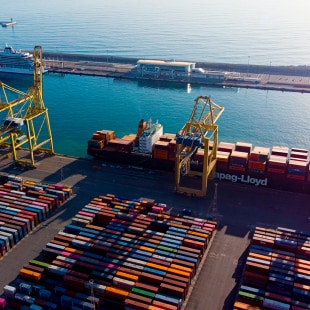US tariffs are here to stay at multi-decades highs
Isabelle Mateos y Lago, Group Chief Economist - US tariff policy has been highly volatile in recent weeks. It is likely to remain so for the next few quarters as bilateral tariffs are negotiated lower, exemptions are granted, and additional sectoral tariffs considerations are being rolled out. At the time of writing, the US average external tariff is in the mid-20 percent. Once some kind of end-game is reached, it will hopefully be lower. But it is unlikely to be meaningfully lower than 15%, i.e. over 5 times higher than at the start of the year. This is because, of the multiple rationales cited by the Trump administration to justify these tariffs, 2 are permanent i.e., not subject to being negotiated away: generating revenues for the Treasury to pay for tax cuts; and achieving self-sufficiency in the production of goods critical for national sovereignty i.e., automobiles, steel, aluminum and possibly copper, pharmaceutical products, and semi-conductors.
These tariffs will hobble the US economy both near-term and longer-term
In the near term, the tariff flurry is causing a large uncertainty shock that has been strongly damaging consumer and business confidence. They will also amount to the largest tax increase in decades for both consumers and businesses. They will increase prices enough to prevent the Federal Reserve from easing policy until the labour market is visibly weaker. In the longer-run, US businesses will face higher input prices than their foreign counterparts, hurting their competitiveness. And those shielded from global competition on the domestic market will become less efficient. US productivity growth overall will suffer. American consumers will have less choice and lower living standards.
In the longer-run, US businesses will face higher input prices than their foreign counterparts, hurting their competitiveness.
The US tariffs are a sizable desinflationary shock for the global economy
For a while a debate went on, notably in Europe, as to whether the US tariffs would be inflationary or deflationary. The arguments for an inflationary outcome were that tariffs imposed in retaliation would increase the cost of imported goods and that weakening exchange rates (the textbook reaction to tariffs) would do the same. In the event, most exchange rates have strengthened against the dollar. And most countries, so far, have decided not to retaliate with tariffs. Indeed, many are offering the US to lower their tariffs, and two —Israel and the UK—have already eliminated them. China for its part has retaliated with tariffs so high that trade its imports from the US will likely shrink to a trickle. Against that, the desinflationary impact is in full swing: global demand is expected to fall as US imports shrink, and protracted high uncertainty reduces consumption and investment across the world. Energy prices have already weakened meaningfully in response (reflecting also an ill-timed production increase from OPEC). And the world is bracing itself for a tsunami of Chinese goods sold at discounted prices after de facto losing access to the US market.
A profound restructuring of the global trading and financial system has started, but globalization will endure
For better or worse, the US has been since the end of WWII the keystone of the global economic and financial order. It now appears to have decided to relinquish this role, at least partially. More specifically, the intent appears to be to retain the elements of the old order that are deemed convenient, while ditching the inconvenient ones (an approach dubbed “cakeism”, short for “eating your cake and having it” during the Brexit negotiations). What the US would like to keep: the ability to tap global capital markets without limits to finance its public debt; having the dominant currency of denomination for international trade; and being a central node of international financial transactions, thereby giving US law potential extraterritorial scope. On the less welcome side of the Trump administration’s ledger are openness to global imports (sometimes on favorable terms to help poor countries accelerate their development), and an exchange rate that is kept too high to balance the current account, owing to demand for the US dollar by the world’s FX reserves managers.
Unfortunately, history suggests that these features come as a package, typically also including amicable geopolitical dominance (See Barry Eichengreen’s life’s work Eichengreen, Sterling's Past and the Dollar's Future, April 2025). As a result, as acknowledged by one of the most articulate exponents of the Trump administration’s gambit, “the scope for monumental, once-every-few decades level of shifts in policy ought to significantly heighten expectations for volatility [ and…] may supercharge efforts of those looking to minimize exposure to the United States.” (See Stephen Miran, A User’s Guide to Restructuring the Global Trading System, November 2024). This is already happening, as evidenced from the fact that last week (7-11 April), the US dollar and long term Treasury bonds failed to play their traditional safe haven role in the midst of stock market turmoil, and instead sold-off like risky assets. Meanwhile, countries around the world are busy launching new trade negotiations to lower trade barriers between one another.
Europe is best positioned to weather the shock
Europe has strong cards to play in its trade negotiations with the US, not least the fact that it is a large market for US exports, of goods but especially services. It is also the largest provider of FDI in the US. As the second largest consumer market in the world, it stands to do well in the many trade negotiations it is embarking upon with both existing and new trade partners. More fundamentally, Europe has plenty of scope to boost its domestic demand, and thereby be less vulnerable to a likely weakening of global trade in the near term. It has monetary and fiscal policy space to mitigate the impact of near-term headwinds. It also has a roadmap to boost investment (in defense, infrastructure, energy transition, digitalization etc.) by close to 1 trillion euros/ year through the end of the decade. This will boost growth materially over that horizon, in a permanent way. Last but not least, it has a stable and predictable policy-making framework embedded in the rule of law. No other economy in the world comes close to offering this combination of qualities. That should make it particularly attractive to global investors, which in turn will make it easier to finance its investment and growth ambitions.



